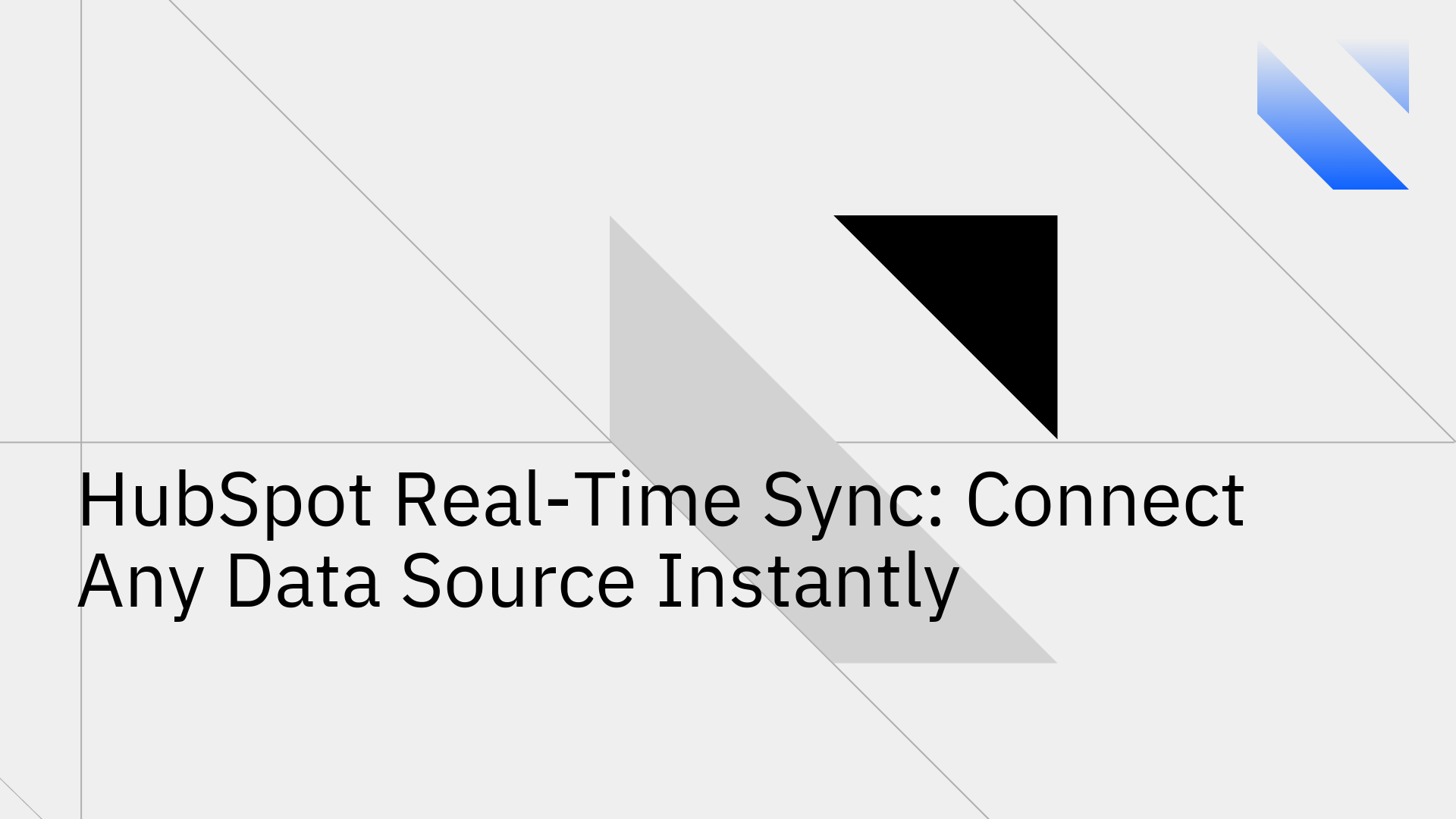
As of September 2025, organizations increasingly struggle with keeping data synchronized between HubSpot and their operational systems. Traditional integration methods frequently lead to outdated information and require substantial engineering effort, directly impacting customer experience and sales performance.
Consider this scenario: when a customer updates their contact information on your website, without real-time synchronization, your sales team might inadvertently call their old number stored in HubSpot, creating a frustrating experience for both the customer and your team.
The scale of this challenge is significant, 95% of organizations struggle with system integration, contributing to substantial financial losses annually [5].
This creates an urgent need for businesses already leveraging HubSpot to find effective ways to connect it with their other operational systems and databases. Stacksync addresses these challenges head-on with its bi-directional synchronization technology, designed to keep operational systems updated without requiring custom code or extensive infrastructure overhead.
Organizations implementing HubSpot database integration encounter several technical limitations that can severely affect operational efficiency and data integrity. These challenges stem from the complexity of modern business systems and the critical need for seamless data flow.
Standard HubSpot integrations often rely on batch processing, creating significant delays in data updates. This latency means sales teams may operate with outdated customer information, while marketing campaigns run on inconsistent data sets, potentially undermining their effectiveness. When customer data isn't current across all touchpoints, it creates a fragmented experience that can damage relationships and reduce conversion rates.
Managing HubSpot CRM synchronization via custom APIs requires considerable ongoing effort for authentication, rate limiting, and error recovery. Engineering teams frequently find themselves allocating substantial resources to maintaining these connections, with data preparation alone consuming 25-30% of the integration budget [7]. This resource allocation diverts valuable technical talent from core business initiatives and innovation projects.
Most existing integration solutions offer primarily one-way data movement, meaning changes originating in external systems don't automatically update HubSpot. This limitation necessitates manual data entry, significantly increasing the risk of inconsistencies across systems and creating additional administrative burden. For organizations seeking comprehensive two-way synchronization capabilities, understanding these limitations is crucial—as detailed in our What Is Two-Way Sync? The Complete 2025 Guide.
Stacksync offers comprehensive solutions specifically designed to address these integration challenges, fundamentally improving how businesses manage their data ecosystems. By focusing on real-time, bi-directional synchronization, Stacksync eliminates the traditional barriers that prevent organizations from achieving true data consistency.
Stacksync's sync HubSpot capabilities are built on advanced real-time change data capture technology and intelligent conflict resolution mechanisms. The platform detects field-level changes and propagates updates within milliseconds, ensuring consistent data across all connected systems. This architecture includes several key components:
For organizations requiring HubSpot PostgreSQL bidirectional sync, Stacksync provides native database connectivity without requiring invasive database modifications. The platform intelligently manages schema mapping, data type conversion, and referential integrity to ensure seamless operation. Key capabilities include:
Stacksync prioritizes security and compliance, maintaining SOC 2 Type II, GDPR, HIPAA BAA, and ISO 27001 certifications. The platform offers multiple secure connection options to safeguard sensitive data throughout the synchronization process:
The implementation process for Stacksync's HubSpot integration is designed to minimize complexity while maximizing operational benefits. Organizations can typically move from initial setup to full production deployment within days rather than weeks or months.
Setting up two-way sync HubSpot and PostgreSQL through Stacksync's intuitive interface eliminates the need for custom development, significantly streamlining deployment timelines:
Beyond basic synchronization, Stacksync enables sophisticated sync data between HubSpot and PostgreSQL workflows that enhance operational capabilities and business intelligence:
The shift from traditional batch processing to real-time synchronization delivers measurable operational improvements across multiple business functions. Understanding these benefits helps organizations make informed decisions about their data integration strategy.
Real-time synchronization ensures sales, marketing, and customer service teams have access to current customer information across all touchpoints, enabling faster and more informed decision-making [1]. Research demonstrates that leading "real-time" businesses experience 62% higher revenue and 97% higher profit margins compared to their competitors [2].
Traditional integration methods consume significant engineering time and resources for both initial development and ongoing maintenance. Stacksync addresses this challenge by providing fully managed infrastructure that handles API changes, error recovery, and system updates automatically, allowing engineering teams to focus on core product development and strategic initiatives.
Consistent, up-to-date data across systems enables truly personalized customer interactions at every touchpoint. Support teams can access real-time order status and interaction history, while sales representatives can reference current customer preferences and behavior patterns, leading to more relevant engagements and measurably improved customer satisfaction scores.
Stacksync's cloud-native architecture is engineered for scalable performance, efficiently handling synchronization volumes ranging from thousands to millions of records without performance degradation. This scalability ensures that as business needs expand, the integration infrastructure grows seamlessly without requiring architectural changes or performance tuning.
Understanding the differences between data integration methodologies is crucial for making informed infrastructure decisions. Each approach offers distinct advantages and limitations:
Stacksync's real-time bi-directional synchronization directly addresses the inherent latency limitations of traditional ETL and ELT processes, ensuring businesses can act on current data—a critical capability when system downtime can cost organizations $14,056 per minute [5].
The data integration landscape offers various approaches, each with distinct advantages and limitations. Stacksync differentiates itself as a specialized platform for real-time data synchronization, particularly excelling in HubSpot integration scenarios.
Organizations ready to eliminate data silos and achieve operational consistency can quickly implement Stacksync's HubSpot integration solution. The platform's comprehensive 14-day free trial provides full access to real-time synchronization capabilities without implementation risk, allowing teams to evaluate benefits within their existing infrastructure.
For organizations with complex integration requirements or unique operational scenarios, Stacksync's experienced solutions architects provide personalized onboarding services. These experts work directly with your team to optimize configuration settings and ensure maximum operational benefits tailored to your specific business needs.
Ready to transform your HubSpot data synchronization strategy?
Contact our team today to discuss your specific integration requirements and discover how real-time, bi-directional synchronization can enhance your operational efficiency and customer experience.
Micro-Glossary: